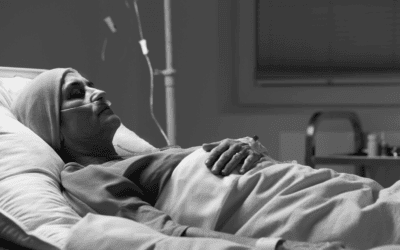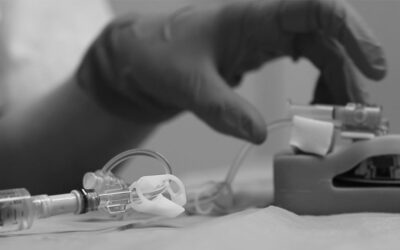In the field of oncology treatment, Totally Implanted Venous Access Devices (TIVADs) have proven to be effective and safe for patients. The choice of placement site for these ports can however significantly impact a patient’s body image and overall wellbeing. Traditionally, TIVADs are placed in the chest, but recent advancements and case studies suggest that mid-arm placement, specifically using PICC-ports, offers substantial benefits, particularly for breast cancer patients. A recent case study1 examines the outcomes of the arm-port placement and the results for a 36-year-old woman after her breast cancer treatment, making a compelling case for the need to consider body image when making these care decisions.
Unfortunately, there appears to be little or no emphasis on cosmetic outcomes during treatment discussions despite abundant evidence showing the significant impact these issues can have on breast cancer patients. A systematic review published in the International Journal of Environmental Research and Public Health found that breast cancer patients often experience a reduction in self-esteem and distorted body image. The review emphasised the need for interventions to enhance both self-esteem and body image, as these factors are crucial for the psychological functioning and quality of life of women with breast cancer2. We, therefore, would like to explore this subject as there is a strong case for promoting patient discussions, prioritising their satisfaction and considering body image when selecting a TIVAD for patient care.
Cosmetic, Emotional and Psychological Advantages
A qualitative study published in BMC Public Health explored the body image changes in women with breast cancer. The findings revealed that body image concerns persist throughout the breast cancer journey, with significant emotional impacts. The research highlighted how both visible and non-visible effects of breast cancer treatment can influence femininity and womanhood, leading to long-term psychological challenges3. Given that breast cancer treatment often involves surgeries that can dramatically alter a woman’s body image, it is essential to consider these factors to preserve the emotional and psychological wellbeing of the patient.
Since the placement of a TIVAD in the chest can lead to visible scars that detract from the cosmetic outcomes of breast surgeries, such as nipple-sparing mastectomies, these scars can negatively impact a patient’s self-esteem, social functioning, and quality of life1. In contrast, placing the port in the mid-arm can avoid additional chest scars, preserving the aesthetic results of breast reconstruction and enhancing the patient’s psychological well-being1.
“The implant of the reservoir at mid-arm allows the absence of additional scars on the chest and the easier access to the port with significant cosmetic and psychological advantage1“.
Case Study: A Young Woman’s Journey
Consider the case presented in The Journal of Vascular Access of a 36-year-old woman with BRCA2-related breast cancer who underwent bilateral nipple-sparing mastectomy with immediate reconstruction and adjuvant chemotherapy. Her TIVAD was placed in the mid-arm, compared to the upper chest. The result was optimal both cosmetically and functionally, with the patient expressing high satisfaction1.
She reported that the arm-port placement had little impact on her daily activities, body image, and social life, highlighting the significant psychological benefits of this approach1.
“In particular, she reported that the port system was a very positive enhancement to her oncologic treatment and expressed great satisfaction for the arm site of the port instead of the chest option… the port placement had little impact on daily activities, body image, and social/sexual life.1“
Clinical Benefits of PICC-Ports
From a clinical perspective, PICC-ports offer several advantages over chest ports:
“PICC-ports are currently regarded as a safe and cost-effective alternative to chest ports4.”
- Lower Infection Rates: PICC-ports have been associated with lower infection rates compared to chest ports1.
- Reduced Risk of Complications: PICC-ports have a lower risk of pneumothorax, and they demonstrate similar rates of late complications, such as thrombosis, compared to chest ports1.
“Several studies have shown that PICC-port insertion is safe, not associated with any relevant immediate or early complications and that the expected incidence of late complications is significantly lower if compared to ‘traditional’ brachial ports4. “
- High Success Rates: In early breast cancer patients, PICC-ports have demonstrated a low overall failure rate (3.8%) with excellent cosmetic results, even after removal at the end of chemotherapy1.
“Furthermore PICC-ports yield excellent aesthetic results and are associated with optimal patient compliance1“
Enhancing Patient Outcomes
A systematic review in the International Journal for Multidisciplinary Research reported that body image dissatisfaction among breast cancer patients is associated with decreased quality of life, increased psychological distress, and reduced sexual functioning. The study highlights the profound impact of body image issues on the overall wellbeing of breast cancer survivors5.
When considering TIVAD placement, the patient’s body image and quality of life should be prioritised. The arm site for PICC-ports presents a less invasive option with fewer visible scars, contributing to better cosmetic outcomes and less perception of a “foreign body” 1.
“This case presentation aims to raise awareness towards women’s body image preservation, particularly in the choice of TIVAP (TIVAD) placement: in most case neckline and upper chest should be avoided for a better patient related outcome1.”
This consideration is particularly important for women who are already coping with significant body image changes due to breast cancer surgery.
In conclusion, the evidence strongly supports the consideration of PICC-ports over chest ports for oncologic patients, especially those undergoing breast cancer treatment. By opting for the mid-arm placement, healthcare providers can help preserve the patient’s body image, enhance their psychological wellbeing, and improve overall treatment satisfaction.
These studies collectively demonstrate the significant psychological and emotional challenges that breast cancer patients face regarding their body image and self-esteem during and after treatment. Addressing these issues through targeted interventions can significantly improve their quality of life and overall treatment outcomes. This approach aligns with advancements in breast surgery aimed at achieving the best possible cosmetic results and underscores the importance of holistic patient care.
References:
[1] Pizzuti G, Cassani C, Bottazzi A, Ruggieri A, Della Valle A, Dionigi F, Anghelone CAP, Sgarella A, Ferrari A. Impact of totally implanted venous access port placement on body image in women with breast cancer. J Vasc Access. 2024 Mar;25(2):673-676. doi: 10.1177/11297298221136330. Epub 2022 Nov 18. PMID: 36401349; PMCID: PMC10938480.
[2] Morales-Sánchez, L., Luque-Ribelles, V., Gil-Olarte, P., Ruiz-González, P., & Guil, R. (2021). Enhancing Self-Esteem and Body Image of Breast Cancer Women through Interventions: A Systematic Review. International Journal of Environmental Research and Public Health, 18(4), 1640. https://doi.org/10.3390/ijerph18041640
[3] Cernikova, K.A., Kracmarova, L.K., Pesoutova, M. et al. We will be different forever: A qualitative study of changes of body image in women with breast cancer. BMC Public Health 24, 2517 (2024). https://doi.org/10.1186/s12889-024-20017-7
[4] Brescia F, Annetta MG, Pinelli F, Pittiruti M. A GAVeCeLT bundle for PICC-port insertion: The SIP-Port protocol. J Vasc Access. 2024 Nov;25(6):1713-1720. doi: 10.1177/11297298231209521. Epub 2023 Nov 13. PMID: 37953715.
[5] Xavier, A. A., & Sheelam, P. K. (2023). Body Image and Breast Cancer: A Systematic Review. International Journal for Multidisciplinary Research. Retrieved from https://www.ijfmr.com/papers/2023/4/4774.pdf.


